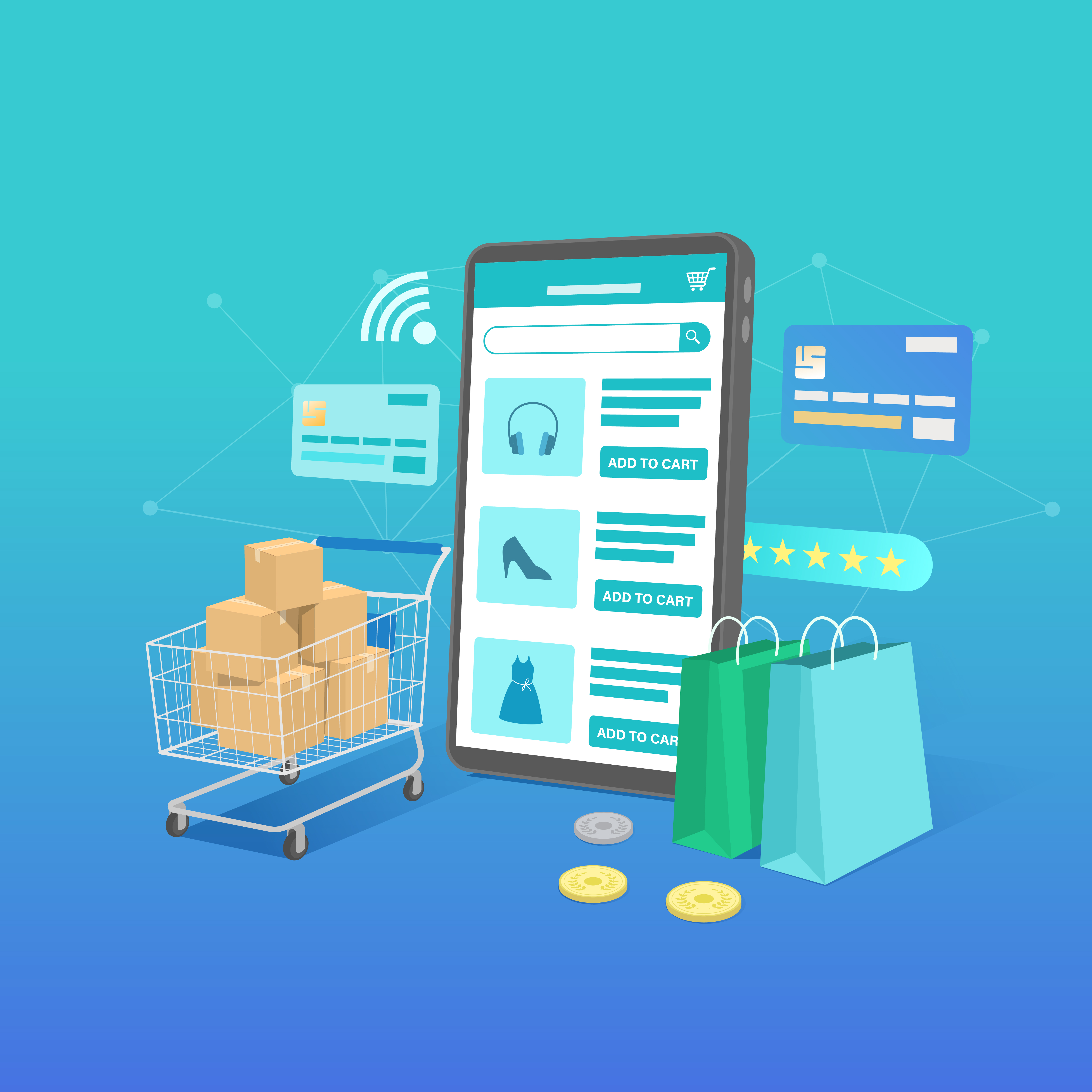Top Ecommerce Trends of 2025: The Future of Online Shopping
Introduction: The Rise of Ecommerce
The ecommerce industry has changed the way people shop & has made it easier to buy anything from anywhere. Whether it’s groceries, electronics, or fashion, ecommerce websites have made shopping faster, more convenient, and accessible 24/7.
With rapid technological innovations, ecommerce growth is reaching new heights. Businesses are adopting innovative solutions to attract customers, to improve user experience, and increase sales. If you run an online store or plan to start one, understanding the latest ecommerce industry trends is very important to stay competitive.
Why is E-commerce Growing So Fast?
With billions of people using smartphones, online shopping has become a part of everyday life. A well-optimized ecommerce shopping website is compulsory to attract mobile shoppers.
Consumers now prefer the convenience of online shopping over visiting physical stores. They expect personalized recommendations, fast delivery, and easy returns. New ecommerce technology, such as AI, AR, and secure payment systems is making online shopping smoother and safer. Businesses that adopt these technologies gain an advantage over competitors.
Social media has become a major sales channel. Top ecommerce sites are integrating shopping features into platforms like Instagram and TikTok. Now that we understand the reasons behind ecommerce growth, let’s explore the current ecommerce trends shaping 2025..
Top Ecommerce Trends in 2025

1. AI-Powered Shopping Experience
Artificial Intelligence (AI) is transforming ecommerce platforms by making them smarter and more efficient. AI helps online stores provide personalized recommendations, answer customer queries through chatbots, and analyze shopping behavior.
- 🔹 AI chatbots provide instant customer support.
- 🔹 Smart product recommendations improve user experience.
- 🔹 Automated marketing helps businesses reach the right audience.
Example: Amazon uses AI to suggest products based on past purchases, making shopping easier and increasing sales.

2. Social Commerce – Shopping Through Social Media
Shopping directly from social media platforms is one of the biggest current ecommerce trends. Platforms like Instagram, TikTok, and Facebook allow users to buy products without leaving the app.
- 🔹 Influencer marketing helps brands sell faster.
- 🔹 One-click checkout makes purchases seamless.
- 🔹 Live shopping events increase engagement and sales.
Example: TikTok Shop enables businesses to sell products through videos, attracting younger shoppers.

3. Augmented Reality (AR) for Virtual Try-Ons
AR technology allows customers to see how a product will look before buying it. This is especially useful for clothing, accessories, and furniture.
- 🔹 Virtual try-ons for fashion and makeup.
- 🔹 3D previews for home décor and furniture.
- 🔹 Reduced product returns due to better visualization.
Example: Sephora's AR tool lets customers try different makeup products virtually before purchasing.

4. Mobile Shopping – A Mobile-First Approach
More than 70% of online shopping happens on mobile devices. This means having a mobile-friendly ecommerce shopping website is no longer optional—it’s necessary!
- 🔹 Mobile-optimized checkout for faster purchases.
- 🔹 Voice search to make shopping hands-free.
- 🔹 Progressive Web Apps (PWAs) for a better mobile experience.
Example: Amazon and eBay have dedicated mobile apps that make shopping quick and easy.

5. Sustainability – The Demand for Eco-Friendly Shopping
Consumers are now more environmentally conscious, making sustainability a major factor in ecommerce industry growth. Brands that adopt eco-friendly practices attract more customers.
- 🔹 Sustainable packaging and carbon-neutral delivery.
- 🔹 Ethical sourcing of raw materials.
- 🔹 Recycled and second-hand product sales.
Example: Companies like Allbirds and Patagonia use recycled materials and promote sustainable shopping practices.

6. More Payment Options & Buy Now, Pay Later (BNPL)
Customers prefer multiple payment options when shopping online. The rise of ecommerce technology has introduced new payment methods, making transactions easier and more flexible.
- 🔹 Digital wallets like PayPal, Apple Pay, and Google Pay.
- 🔹 Cryptocurrency payments for tech-savvy buyers.
- 🔹 Buy Now, Pay Later (BNPL) options like Klarna and Afterpay.
Example: Shopify and WooCommerce integrate BNPL services to allow customers to pay in installments.

7. Headless Commerce – The Future of Ecommerce Platforms
Headless commerce allows businesses to customize their ecommerce platform without affecting the back-end system. This provides greater flexibility and faster updates.
- 🔹 Faster website updates and better scalability.
- 🔹 Integration with multiple devices (smartphones, tablets, smartwatches).
- 🔹 Enhanced user experience with personalized front-end designs.
Example: Nike’s headless commerce strategy provides a seamless shopping experience across different platforms.

8. Subscription-Based Ecommerce Models
Many top ecommerce platforms are shifting to subscription-based models to increase customer loyalty and recurring revenue.
- 🔹 Monthly subscription boxes for personalized shopping.
- 🔹 Exclusive discounts for subscription members.
- 🔹 Auto-renewal services for essential products.
Example: Amazon Prime and Dollar Shave Club offer subscription services that keep customers coming back.

9. Stronger Cybersecurity for Safe Shopping
With the rise of online transactions, cybersecurity is a major concern. Businesses are implementing strong security measures to protect customer data.
- 🔹 Two-factor authentication (2FA) for account security.
- 🔹 AI-powered fraud detection to prevent online scams.
- 🔹 Blockchain technology for secure transactions.
Example: Walmart and eBay use AI to detect fraudulent activities and protect shoppers from cyber threats.

10. Omnichannel Shopping for a Seamless Experience
Customers expect a smooth shopping experience across different channels, whether on a website, mobile app, or physical store.
- 🔹 Buy online, pick up in-store (BOPIS).
- 🔹 Unified shopping cart across multiple devices.
- 🔹 AI-powered customer support for better assistance.
Example: Apple allows customers to start their purchase online and complete it in-store without any hassle.
Conclusion: Preparing for the Future of Ecommerce
The ecommerce industry trends of 2025 is focusing on making shopping more personalized, mobile-friendly, and sustainable. Businesses that embrace these advancements will see strong growth in their businesses.
If you run an ecommerce shopping website, you can stay ahead of these trends & it will help you attract more customers, increase sales, and build a successful online business.
